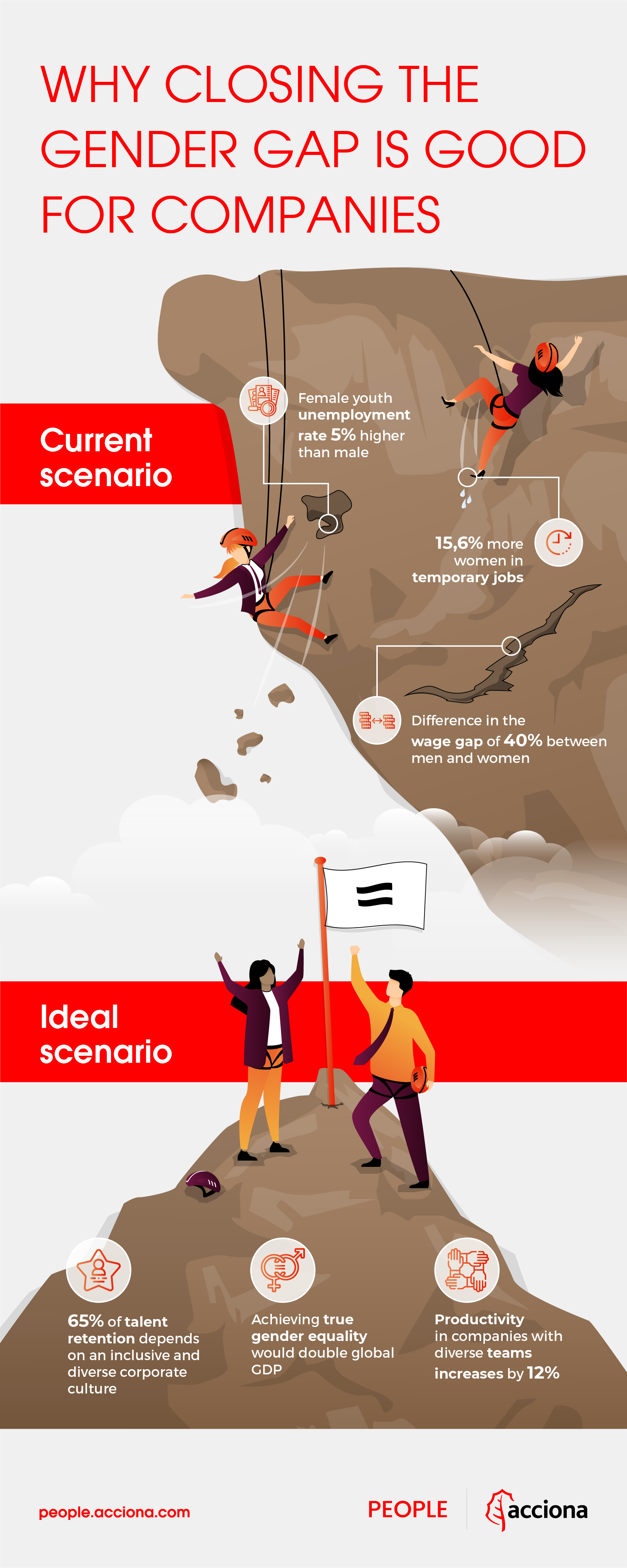The increase in the number of women entering the labour market, the rapid growth of their employment rates, their longer active years and the increase in technical and professional jobs held by women show that the feminisation of the labour force is one of the most relevant phenomena occurring in labour markets worldwide. Moreover, we know that female leadership is key in the effective fight against COVID-19. However, all this progress is hampered by gender bias and prejudice in the work environment. The concept of gender bias refers to biased inclinations towards people because of their gender which, in the case of women, translates into multiple prejudices that can appear within the work environment.
The influence of bias in the labour market
Good evidence of the existence of a gender bias towards women in the workplace is the research published in the journal ‘Science Advances’, in which managers in one organisation were given identical descriptions of a worker, with the only difference being a male or female name. The result was that most rated the male worker as more competent and recommended a higher salary for him, with a pay gap of 8%. The key drivers of this gap were the managers themselves, who believed that gender bias at work no longer existed in their profession.
In the same vein, a paper from Heinrich-Heine-University (Düsseldorf, Germany), published in the journal ‘Sex Roles’, used an indirect questionnaire technique to collect information on feelings towards female leaders, demonstrating once again the existence of gender bias in work under pressure. In the results, 45% of male respondents indicated that they felt women were less qualified for leadership positions than men.
It also highlights the findings of the publication ‘Gender stereotypes and female leadership’ by the University of Buenos Aires, which states that 72% of men prefer a male boss. But where do these responses come from, and has it been proven that men respond better than women in competitive, high-pressure or crisis environments?
Gender bias in leadership
The answer is no, as there’s no evidence for this. To find the reasons for this type of response, we need to talk about stereotypes and cognitive biases, which mark both the results of this research and the difficulties women face in occupying positions of responsibility because of gender bias. The existing inequity is directly related to the positive association made between traits typically attributed to the male gender – such as aggressiveness and competitiveness – and leadership.
These socially shared, rigid and widespread perceptions, which are attributed to a certain social group, are what cause, for example, power or economic ambition to be conceived as something ‘natural’ for men. Thus, when women occupy leadership positions at work, they challenge the gender stereotype prescription and are rejected.
This is shown by the studies cited above or by Eagly and Karau’s ‘Role congruence theory of prejudice towards female leaders’ (2002), which states that women who are competent in leadership positions, and therefore under greater pressure at work, tend to be personally and socially disapproved of, since their behaviour challenges socially shared beliefs of what is desirable conduct for women.

Women and men in decision-making
The magazine ‘Harvard Business Review’ compiled in one of its latest publications some of the benefits of women occupying top positions: greater access to talent, improved commitment, an increase in the number of leaders and improved decision-making and problem-solving… Precisely this last aspect is directly related to the responsiveness of women in leadership positions or extreme situations of pressure or competition, completely dismantling the gender bias in work under pressure.
Mara Mather, a cognitive neuroscientist at the University of Southern California, and Nichole R. Lighthall, a cognitive neuroscientist at Duke University, are two of many researchers who have found that under normal circumstances, when everything is easy and manageable, men and women make similarly risk-conscious decisions. They “gather the best possible information, weigh the potential costs against the potential gains, and then choose how to act,” they note. However, the difference comes when stress is added to the situation, at which point women – for the most part – opt for safe gains and men take on more risk – costing them losses on the ground.
Similarly, Credit Suisse evaluated 2,400 companies between 2005 and 2011 —the years leading up to and following the global financial crisis— and found that large corporations with at least one woman on the board performed 26 per cent better in decision-making than companies with all-male boards.
The bottom line is that women respond to crisis or extreme situations in the workplace just as men do, but they’re exposed to a host of gender biases at work. Because decision making has to do with responsibility, experience, taking risks, looking for alternatives to problems or challenges that do not yet exist. It has to do with the aptitudes of each person, their skills, their previous experience, their capacity…. And skills don’t depend on gender.
Sources: UOC, El País, La Información, NY Times


